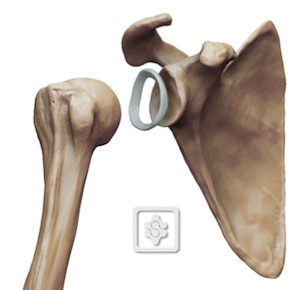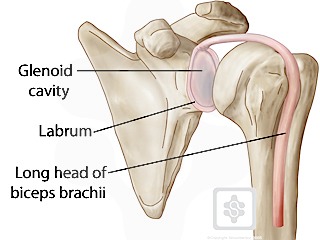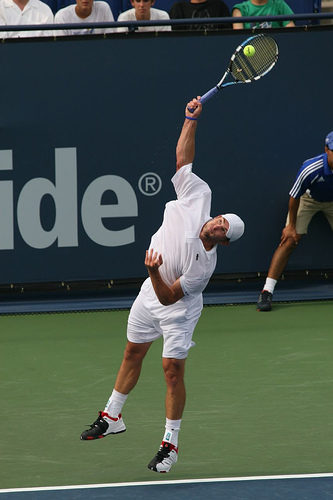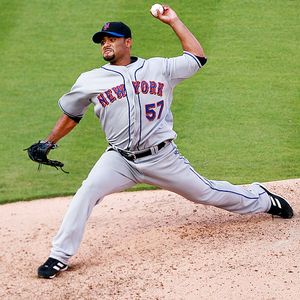Chas gives some great suggestions for you, but the references are so technical, I am not at all sure you will pick up on them.
First of all, having strong rotator cuff shoulder muslces, particularly of the rotator cuff, will help protect the labrum from further damage. The following is the "best" set of shoulder exercises that I have seen:
Thrower's Ten Exercise Program
http://www.muhlenberg.edu/pdf/main/athletics/athletic_training/throwers10.pdf
These exercises specifically work the muscles of the rotator cuff.
It is not important for you to know the names of these four muscles, or how each one of them works.
It is only important for you to know that they completely surround the shoulder joint, and provide the strength to keep your shoulder together.
Keep your shoulder together?!!!!!!
Does this mean your shoulder can fly apart?
Yes!!!!
The shoulder is the only joint in the body that is so weak as a joint.
Most joints have the bones at least partly interlocking to keep the bones from flying apart with violent motions like running, jumping and bashing a tennis ball.
But the arm bone (humerus) just loosely touches the surface of where it is attached to the body at a shallow cavity (glenoid fossa).
The labrum sits around the outside edge of this shallow cavity (glenoid fossa), giving that bony cavity increased depth.
The labrum is the white ring in the picture above. The rim acurally is attached around the outside of the glenoid fossa, but is shown here not attached to emphasize how flimsy it looks compared to the strong arm bone that the labrum is supposed to help slipping off the glenoid fossa.
The increased depth the labrum gives to the cavity means the arm bone is less likely to slip off the shallow cavity.
But the labrum is relatively easy to injure because it is made of just fibrous tissue and cartilage - easy to break through by something as hard as the end of an arm bone.
So why do we have such lousy shoulders, with such a lousy labrum?
Answer: amazing range of motion.
We can swing our shoulder through an amazing up and down and out to the side and all around.
There is no other joint that comes close to the range of motion of the shoulder joint.
But this amazing range of motion comes with a cost:
lousy stability.
Lousy stability means the arm bone can slide too far on the shallow cavity it rests against.
Sliding too far means the arm bone can injure the thin ring of cartilage and fibrous tissue known as the labrum.
And to complicate matters, the biceps tendon is attached to the top of the labrum.
The biceps muscle is the big muscle of the upper arm that is quite strong - it is easily strong enough that it can exert enough force to pull so hard on the labrum, that it can tear the labrum.
A. Normal attachment of biceps tendon to the top of the labrum
B. The biceps tendon has pulled the top of the labrum off the underlying bone, tearing it loose.
For the life of me, I can't understand why many more tennis players don't have labrum tears.
After all, everyone knows that to really smoke a serve you have to swing as hard as you can.
And everyone knows that to bash an ace, you have to reach way up high and crush that ball down into the court.
Right?
Wrong!!!!
None of the best servers reach up high to serve!
Yes, none of the best servers reach up high to serve!!!!!!!!!!!
They all hit the ball with their arms out to the side of their body!
They just turn their bodies so the side of their body is pointed straight up!!!!!!!!!!!!!!!!!!!










